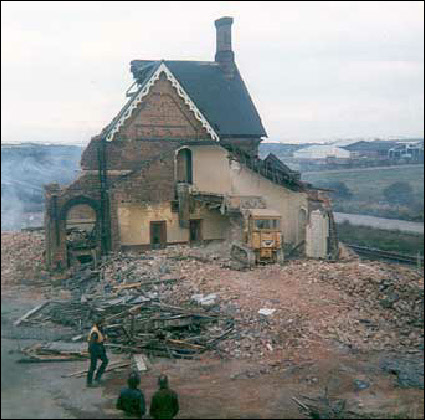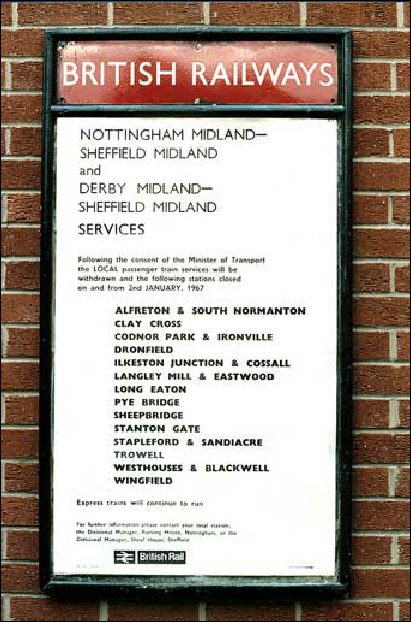Closure and demolition
As a consequence of the Beeching Report the station was closed to passenger traffic on the 2nd January 1967 and to all traffic in October 1967 following the laying of a siding into the nearby Explosives & Chemical Products factory to the east of the station and the transfer of remainder of the goods traffic to Derby St Marys Goods Depot. Following closure the station became a depot for the contractors installing the equipment for the Trent Power Box. At this time electricity was installed to the operational buildings, they having been gas-lit until closure. (The station master's house, part of the station building, had electricity for many decades).
The station, prior to closure, had a very healthy passenger traffic, predominantly to Chesterfield, Sheffield, Nottingham and further afield. There was not a significant traffic to intermediate stations on the Erewash Valley Line. When the proposed closure was announced there were many objection received, not just from individuals but also the local councils. Almost immediately after closure the local councils mounted a campaign for re-opening. Part of their justification was that Sheffield - Nottingham - London services continued to use the line through Alfreton and, therefore, no additional trains were required. Following a vigorous campaign British Rail relented and on the 5th October 1972 announced that a new Inter-City station would

The Station Master's family, who had continued to occupy the house part of the station buildings, moved out on the 20th October and demolition started two days later. The slates and lead from the roof were recovered for use elsewhere and the buildings razed. All the timber was burned as it was infected with dry rot, a characteristic of all stations which had a service with London St Pancras according to a British Rail buildings surveyor at that time. It was, apparently spread by the passenger's footwear!
